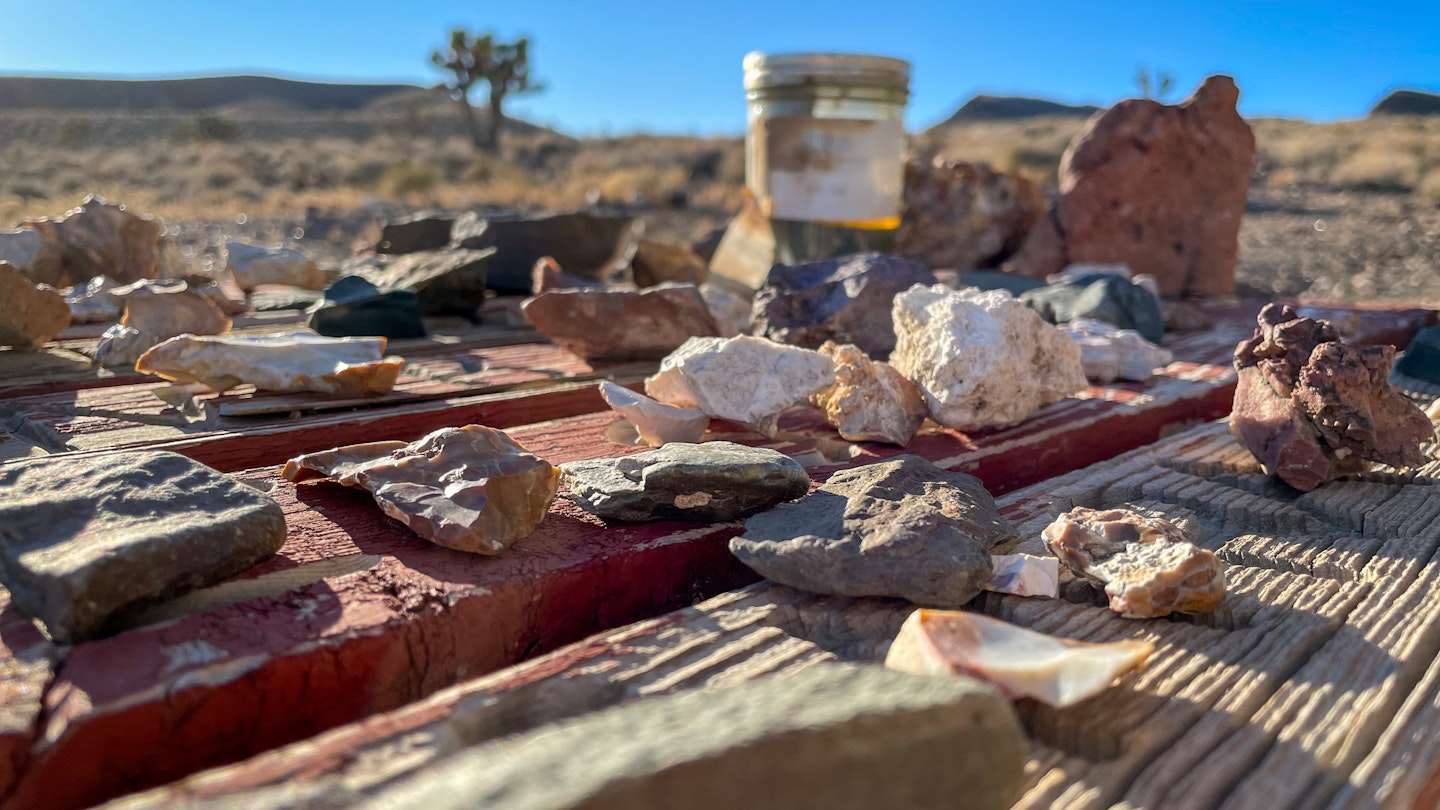Discover Nevada’s Hidden Treasures
One of the biggest misconceptions about Nevada is that it’s a dusty place devoid of any sparkle, but the Silver State is full of shine if you know where to look. Nevada’s glittering experiences are both subterranean and celestial. Here’s our guide to the state’s shimmering treasures.
Dig into Rockhounding
Geologically speaking, Nevada is a marvel. It’s the third most seismically active state in the country, and it owes its geological diversity to processes spanning millions of years: the formation of ancient seabeds, tectonic plate movements, volcanic intrusions, glaciers, and more.
As a result, a wealth of minerals and ore is tucked away beneath its mountains and basins. While silver and gold may be the most valuable, Nevada’s earth harbors a variety of other gems accessible to rockhounds and crystal enthusiasts, including quartz, chalcedony, black fire opal, serpentine, jasper, and garnet. Explore some of the best sites for gem hunting:
Gemfield
Located just five miles outside of historic Goldfield, Gemfield’s treasures require minimal searching – simply look down. This privately owned rockhounding haven features dig sites for a rainbow of unique stones. Gemstone-quality chalcedony showcases Saturn-esque rings of vermillion, orange, and white, while serpentine displays intoxicating shades of green streaked with shimmer. Gently comb through the bounty to find your favorites and remember to leave $1 per pound in the payment box at the entrance. Only hand tools are permitted.
Otteson Brothers Turquoise
Hidden deep in the Nevada hills about an hour outside of Tonopah lies the Otteson Brothers Turquoise Mine, where the bright blue-green stone seems to jump out of the bedrock. This family-owned rockhounding site invites visitors to search for a piece of Nevada geological history. The mine yields several varieties of turquoise in a range of colors and textures. However, extracting turquoise requires effort, so bring good tools – like a rock hammer, bucket, and gloves – and ask the Ottesons for their tips. Half-day tours are available, covering the stones you take home.
Garnet Hill
When prospectors found garnet in Nevada in the 1870s, they quickly claimed the red gemstones were rubies. Although they weren’t, the finds contributed to the state’s rich history. Located just 20 minutes outside of Ely, Garnet Hill yields a spectacular number of gems perfect for jewelry making or simply showing off to friends. Searching for garnets requires a keen eye and a bit of patience, but not too much physical strength. These round stones are sometimes found within other rocks, but often, they scatter on the ground, glimmering in the sunlight. Timing your visit after rain can help expose garnets in the gullies.
Rockhounding Responsibly
Rockhounding in Nevada requires adherence to specific rules. It should only be conducted in designated sites – not in protected lands or on private property. Rockhounding is prohibited in state or national parks. If you’re on Bureau of Land Management (BLM) land, verify if rockhounding requires a permit.
While digging, be mindful of your physical impact. Although it may be tempting to dig extensively after finding treasures, rockhound in moderation for the benefit of others. Lastly, respect any Indigenous artifacts; it’s both illegal and culturally insensitive to disturb them.
Eyes to the Skies
If you’re ready to switch up your view, Nevada is home to some of the darkest skies in the entire country. These night skies are not only stunning to behold, but they also play a crucial role in the local wildlife. The following areas offer spectacular stargazing opportunities:
Great Basin National Park
With the motto “Half the park is after dark,” Great Basin National Park is a prime location for turning your gaze skyward. Due to its remote location, low humidity, and high altitude, this park offers unrivaled views of the Milky Way and the Andromeda Galaxy. While there are various excellent spots for solo stargazing, the park also hosts robust astronomy programs, particularly from Memorial to Labor Day.
Advanced star enthusiasts should mark their calendars for the Great Basin Astronomy Festival each September. Astronomers set up telescopes for public use, and guest speakers discuss celestial phenomena, providing an inclusive experience for all astronomy lovers.
Basin and Range National Monument
Located just a few hours from Great Basin National Park, Basin and Range National Monument features 704,000 acres of remote desert, ideal for those seeking solitude while stargazing. With an average of only 40 car visits per year, this area boasts excellent conditions devoid of light pollution. Visitors are free to hike and camp anywhere within the monument, providing opportunities to immerse oneself in the breathtaking natural light displays.





